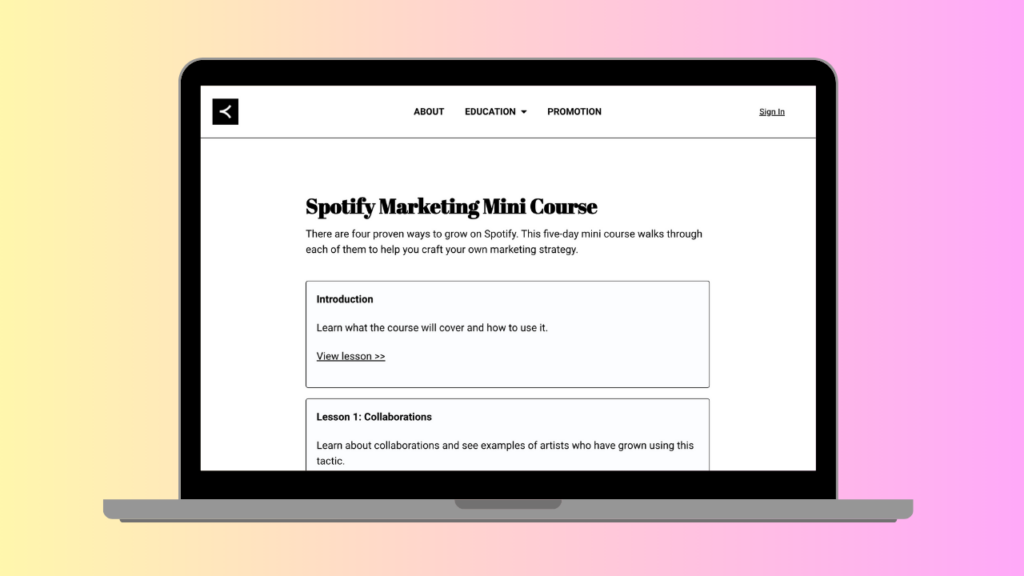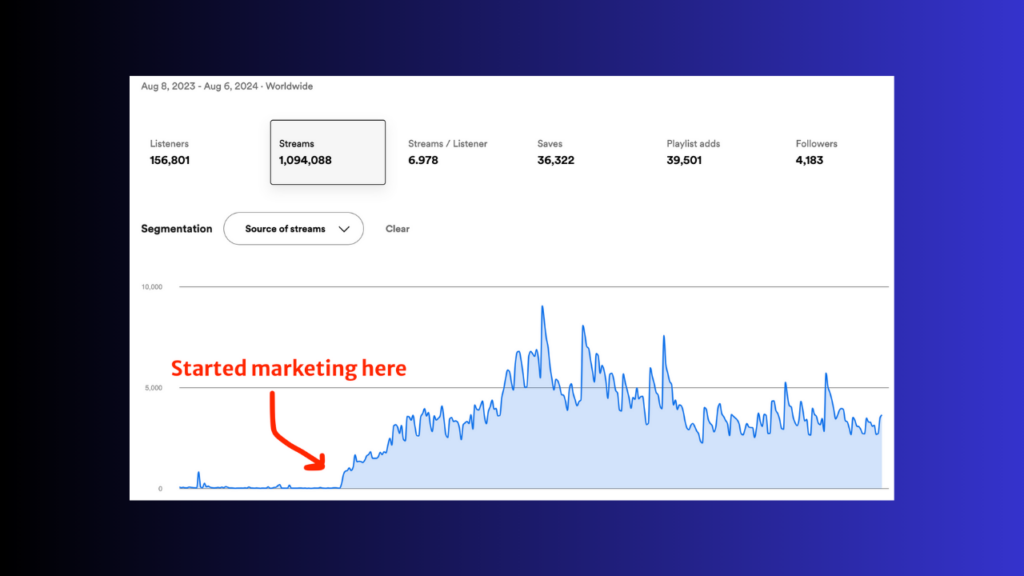Here’s my soapbox for today:
Numbers don’t mean anything in isolation.
Except for the number 42, obviously. Every other number requires context to be useful.
I’ve been reminded of this as I’ve looked over a bunch of Spotify for Artist accounts and Meta ad campaigns; I’m doing some end-of-year review to try to figure out what works and what doesn’t, with the goal of doing more of the former.
When you look at data – speaking from personal experience – it’s easy to obsess over stream counts. Or monthly listeners. Or save rates. Or social followers. Or some mushily-defined number of fans.
But no matter what metric you choose as your North Star, Goodhart’s law applies: “Any observed statistical regularity will tend to collapse once pressure is placed upon it for control purposes.”
Sounds nerdy, I know.
But don’t worry; despite the fact that it includes the pedantic phrase “observed statistical regularity,” it’s really not a complicated concept, and this won’t be a long email.
When I first started running Meta ads, I obsessed over cost per result.
This is basically Number of Results / Total Spend, and it represents how much it costs, on average, to get a user to take the action you want.
I wanted people to click on a landing page that would take them to Spotify. A lower cost per result meant that I’d get more clicks to Spotify, and more clicks to Spotify meant I’d get more streams and saves and followers for my music.
Hypothetically, of course.
The problem, as I quickly found out, is that cost per result can be super misleading. Sometimes (especially if you have Advantage+ Audience selected), Meta taps into an audience of people who could care less about your music but who, apparently, take a great, absurd joy in clicking on things.
When this happens, you get tons of clicks, but you basically get no engagement on Spotify.
The bottom line: If you optimize only for cost per result, you probably won’t get the results you actually want.
And this principle is true no matter which number you isolate.
If you focus on streams above anything else, you run the risk of bots. If you focus on social media followers above all else, same thing. Even if you focus on engagement metrics, like saves on Spotify or comments on social media, you’ll quickly find that the system can still be gamed.
Our culture has this idea that we understand things by breaking them down into their smallest possible pieces. But this is a flawed way of thinking. So many things – music is a great example of this – only make any sense as the sum of their parts.
There is no single data point that means anything by itself. Things only matter in context.
Even numbers take their meaning from relationships.
So…
If you’re marketing your music, keep measuring what’s working.
But don’t treat any one data point as the be-all, end-all. Remember Goodhart’s law, and don’t make a measure into a target. Look at groups of metrics rather than single numbers in isolation.
And if you’ve thought and thought and things still don’t make sense, just remember:
42.











